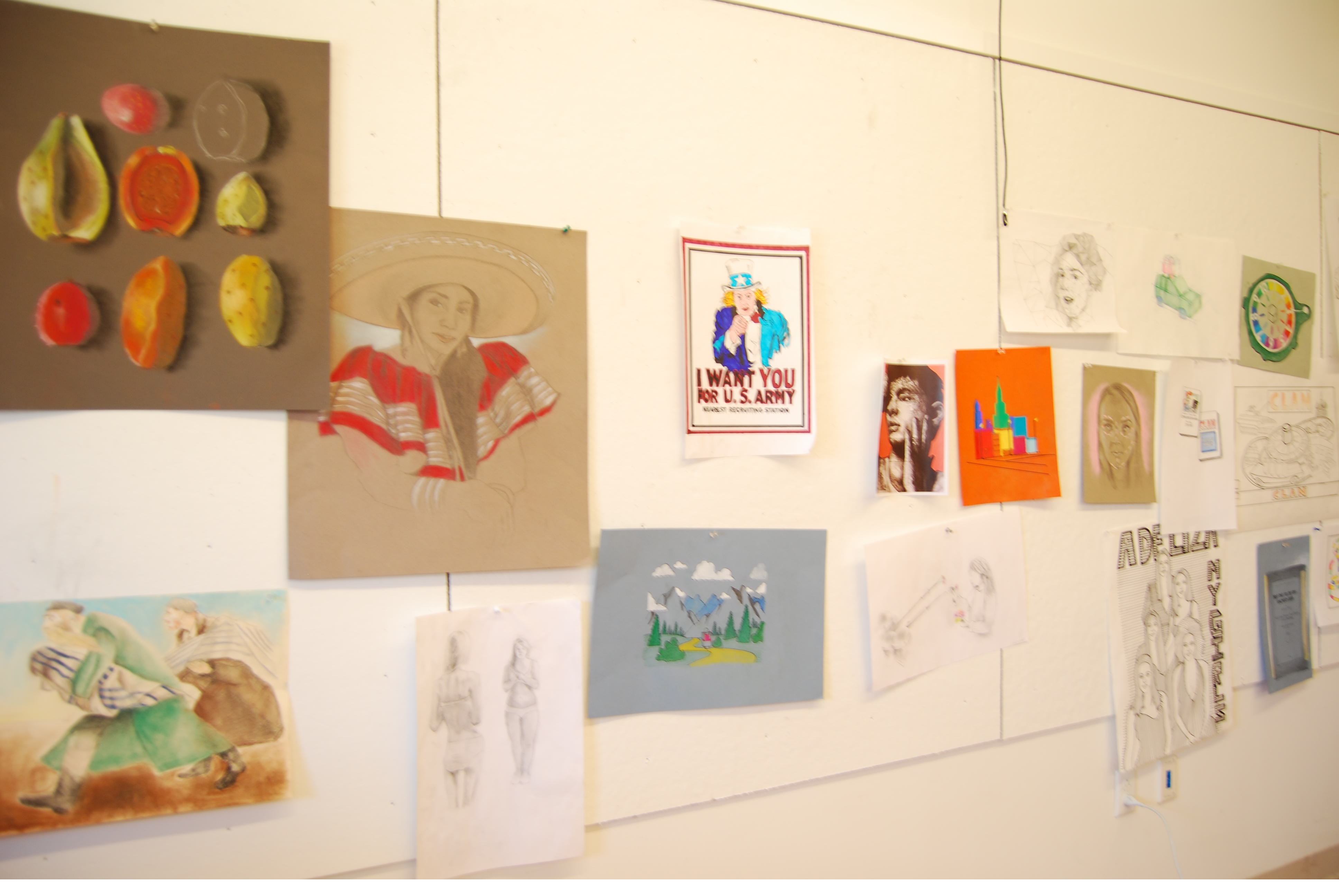While spring for Deerfield students means fun trips down to the river and sunny outdoor days, it also means two weeks of intense AP exams, mostly two-to-three-hour written tests.
However, a few AP classes at Deerfield have slightly unique assessment requirements. In the final eight weeks of the school year, students in AP Studio Art produce their “concentration,” the second half of their AP portfolio that is sent to the College Board in early May. All twelve pieces in a student’s “concentration” must be based on a single topic of the student’s choosing.

The concentration is a new experience for many artists in the class. For the first time, a teacher gives them the freedom to produce whatever work they want without instructional directions on particular assignments. Students are able to choose topics they are passionate about and then reflect them in their artwork. Ines Bu ’18, based her topic on her passion for fashion design: “My concentration is on the process of fashion design, which is something that I am very interested in and thought could be reflected creatively through my art.”
In eight weeks, a student must choose a topic, research it, and produce 12 images. Earlier in the year, students were given roughly a full week for each assignment, but for the AP exam they have four to five days per project. Mr. Dickinson has been teaching AP Studio Art for over twenty years and designed the AP curriculum for Deerfield Academy. “The most challenging aspects for the students are coming up with an idea,” he said, and “executing it, while being able to budget work time.”
Daniella Faura ’17’s project focuses on utilizing abstract architecture to represent common living spaces; she agrees with Dickinson. “For many of us, this is a sixth course,” she said, “so between schoolwork and co-curriculars, it’s hard to find time to work on our projects.”
The creativity component of the concentration can be challenging but also liberating, Mr. Dickinson said. “It is a time where students are required to produce work independent of the teacher,” he explained. “They take all the skills that they have learned over the past six months and funnel it into a body of work that they take full ownership of.”
While Mr. Dickinson does not assign projects to the students, he still plays a vital role in guiding their various endeavors. Mikaela Wellner ’16 explained how Mr. Dickinson helps students think more broadly about their topic throughout the creative process. “Mr. D will ask you questions that lead you to form your own opinion on the topic and think of ideas that you may not have realized before,” she said.
On May 7, students will submit their two-part art portfolio, including the “breadth,” comprised of work from the first two terms, and the final “concentration.” The process will allow students to mature as both students and artists in their skills and creativity.
Faura reflected on the year: “This class has made me realize that I have the talent to create something beautiful in a skillful way, while being confident in my work.”

